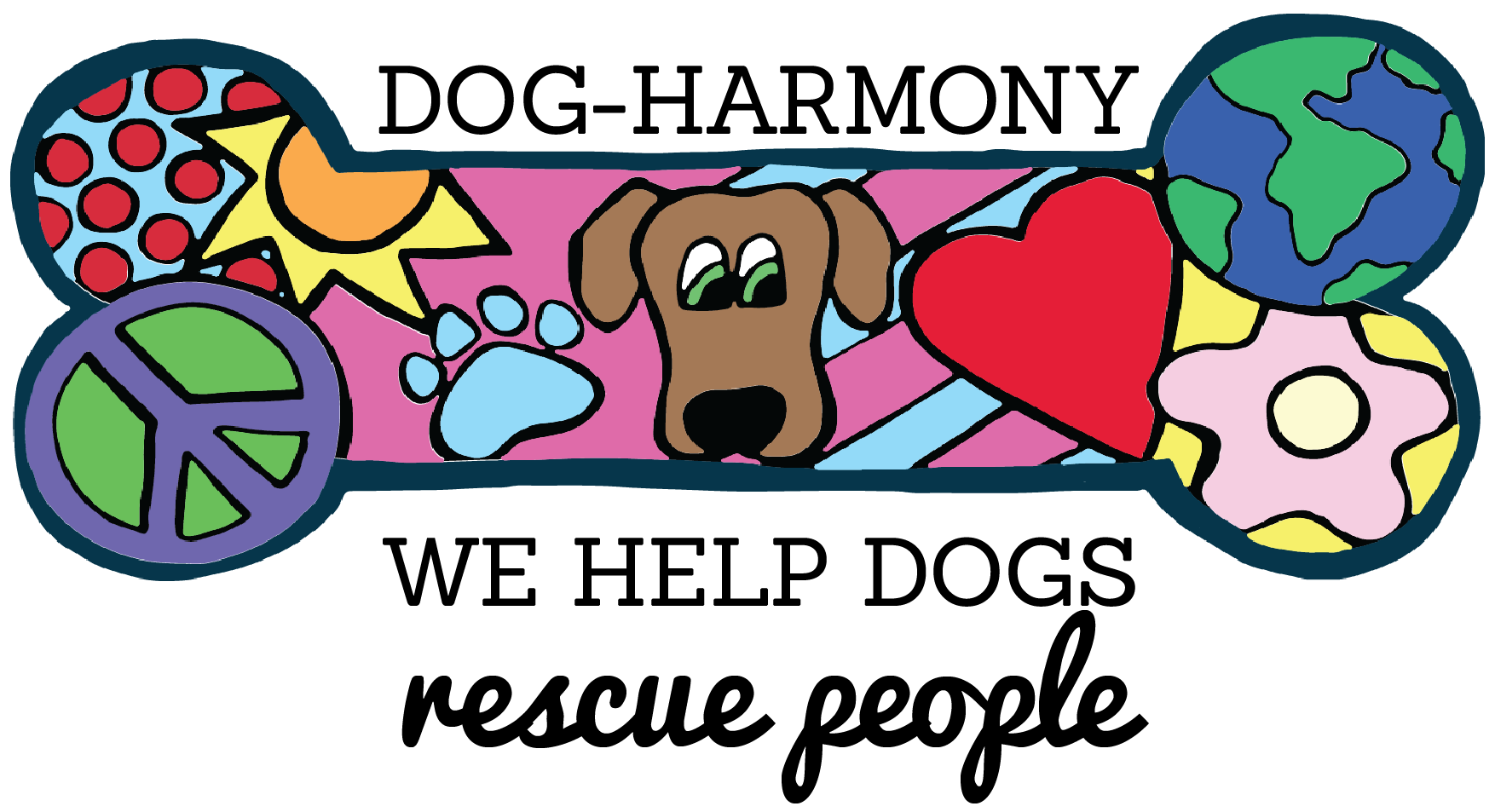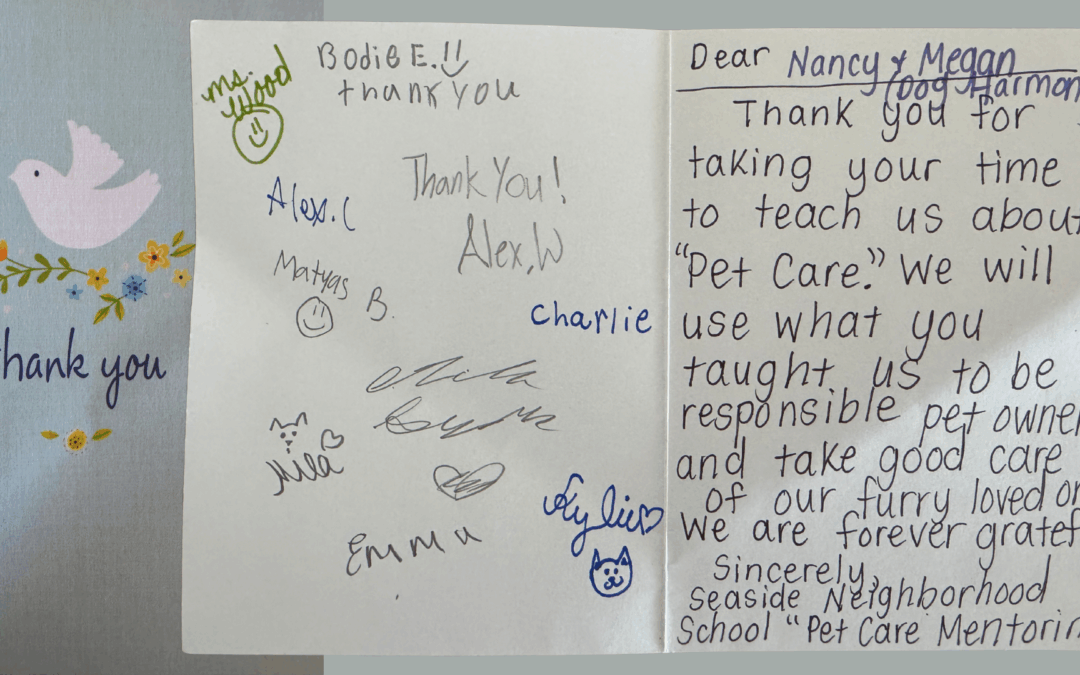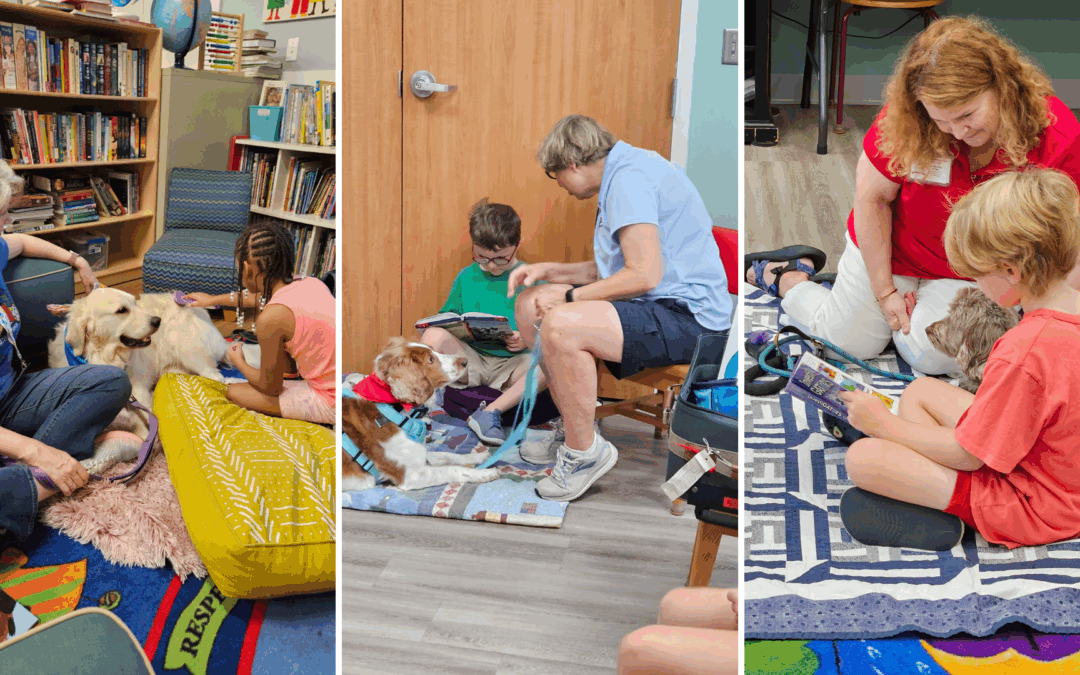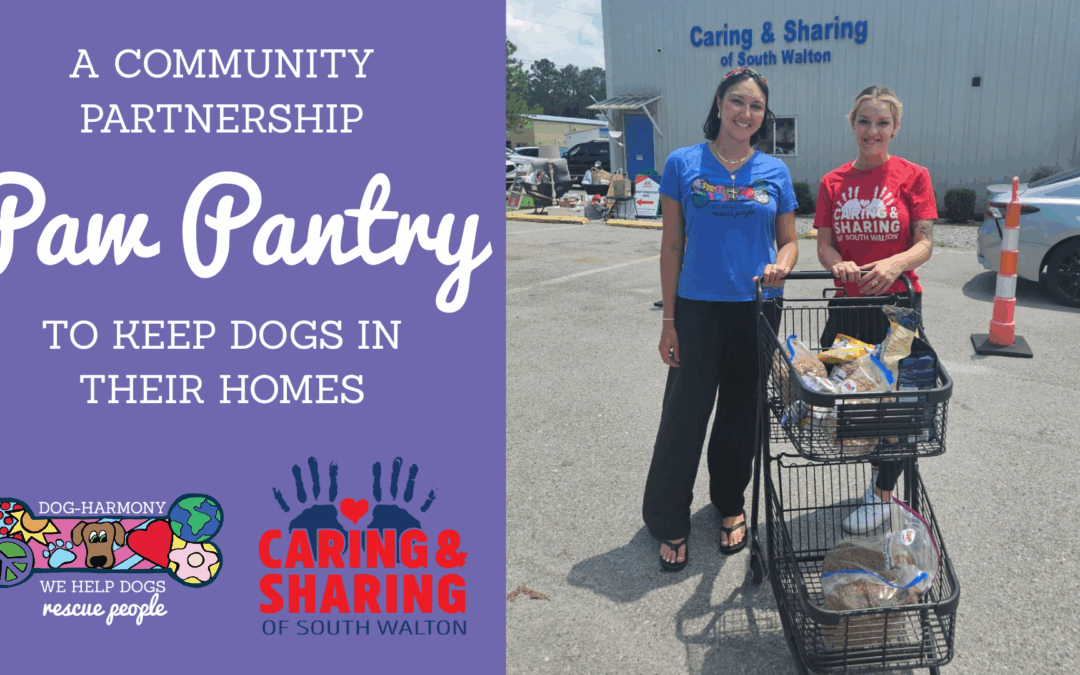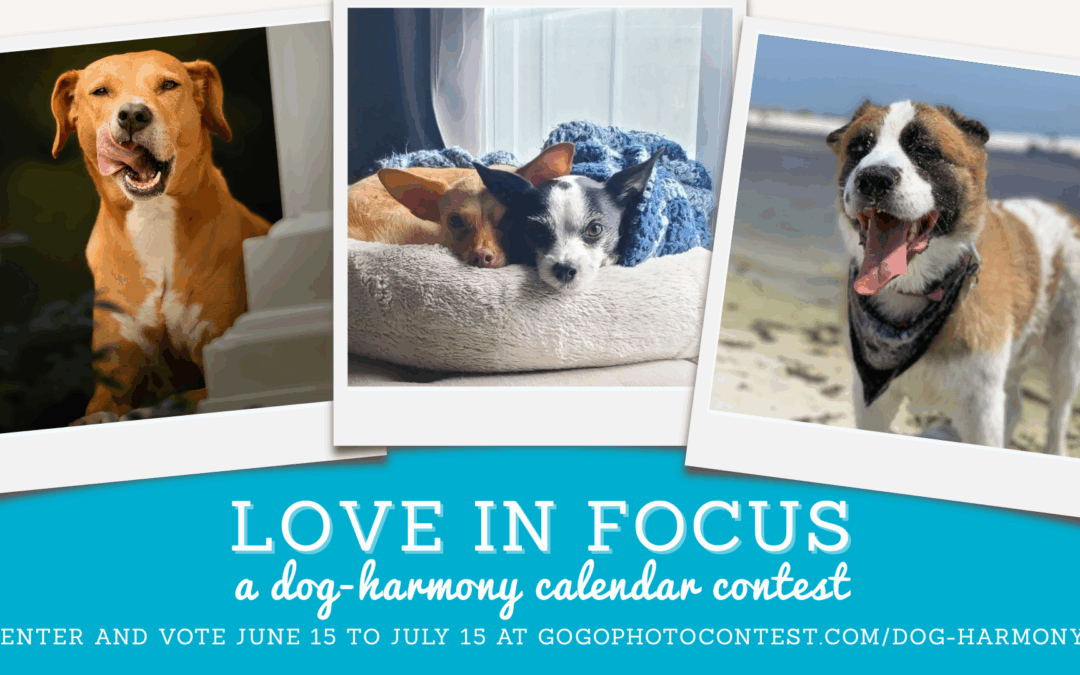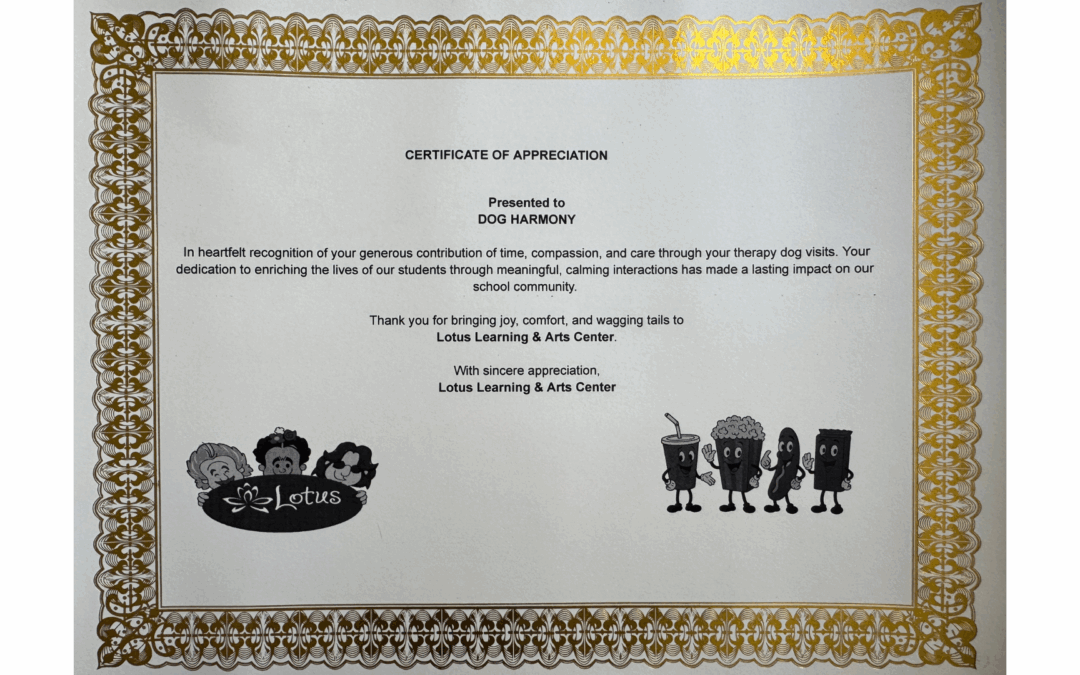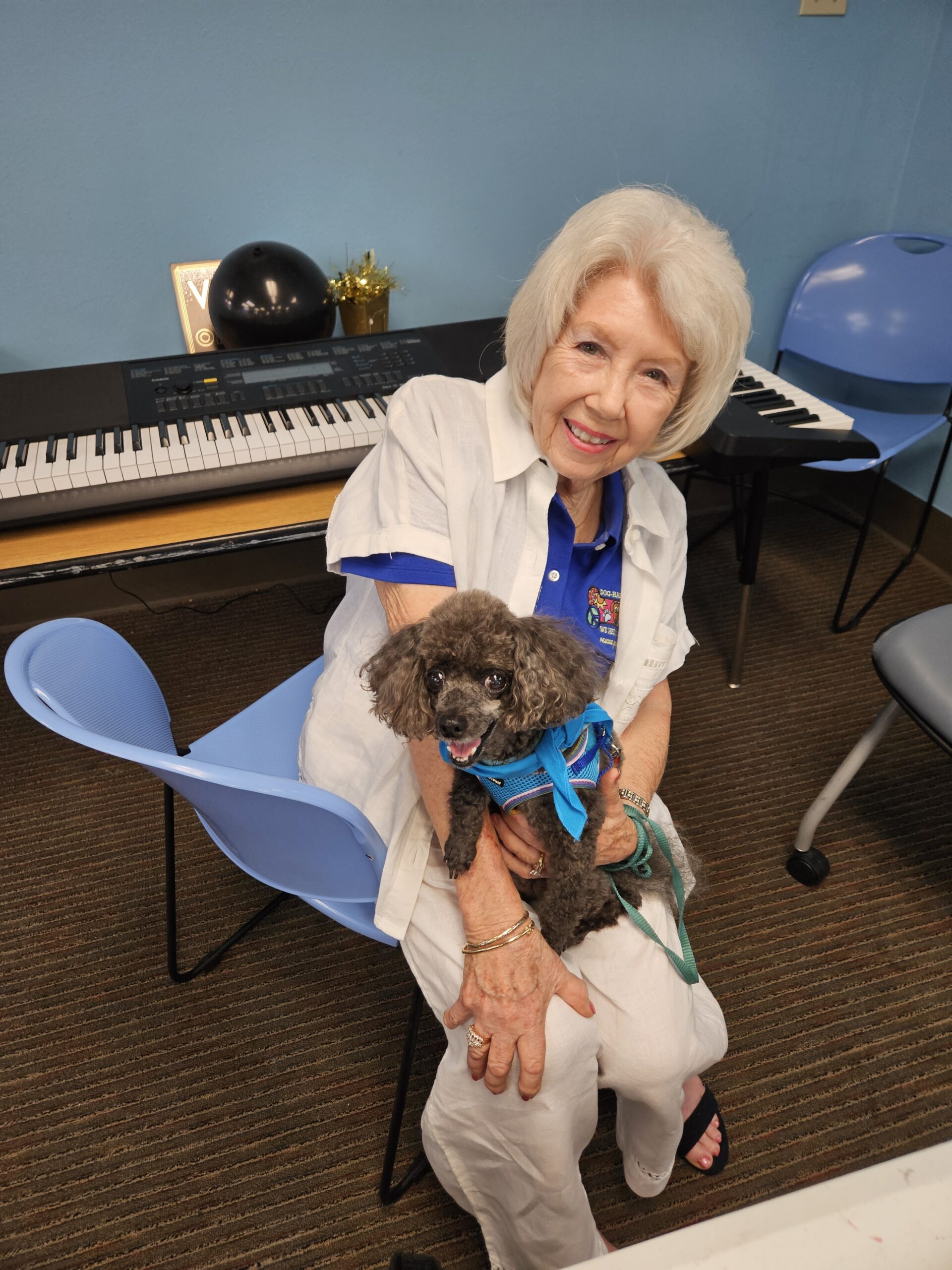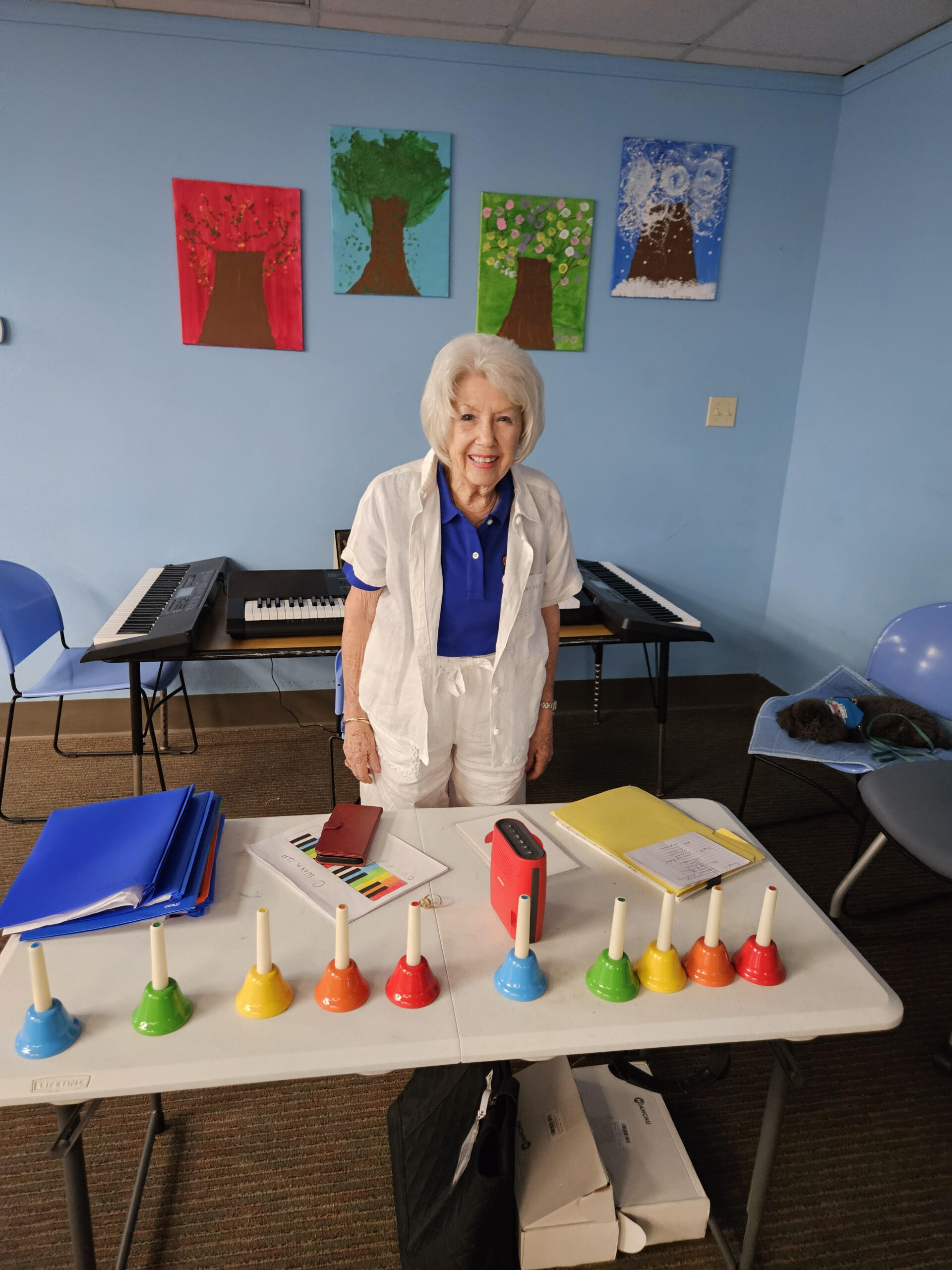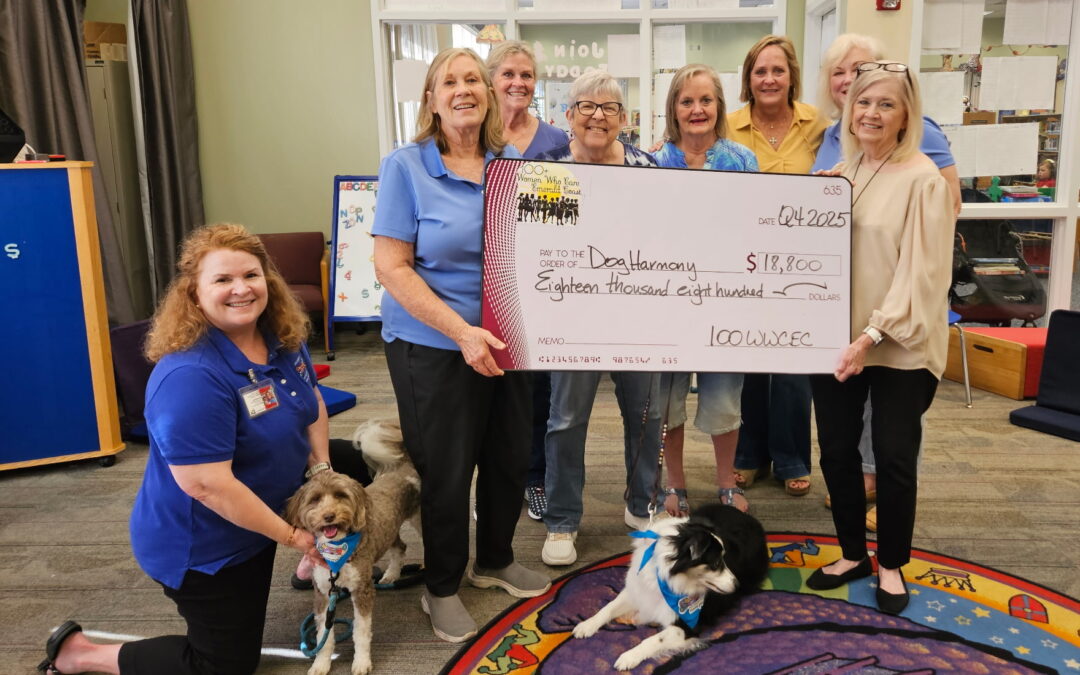
Dog-Harmony Receives Generous Q4 Donation from 100+ Women Who Care Emerald Coast
Miramar Beach, Fla. — Dog-Harmony, Inc. is honored to announce that it has received a generous Q4 donation of $18,800 from 100+ Women Who Care Emerald Coast, a philanthropic group dedicated to making a meaningful, local impact through collective giving.
This gift will directly support the expansion of Dog-Harmony’s evaluated Therapy Dog Teams across Okaloosa, Walton, and Bay Counties, allowing more children to benefit from the comfort, confidence, and emotional support these volunteer teams provide. Therapy Dog Teams are essential for Dog-Harmony’s caring mission to provide literacy and wellness programs, including READing Paws, humane education classes, and visits with at-risk youth.
The donation will also help sustain current Therapy Dog Teams by supporting specialty insurance, handler and dog uniforms, training, and essential operational needs that keep the program running safely and effectively.
“We are deeply grateful to the members of 100+ Women Who Care Emerald Coast for believing in our mission,” said Nancy Bown, Executive Director of Dog-Harmony. “Their generosity allows us to reach even more children with the healing presence of Therapy Dogs and helps ensure our teams can continue serving the community with excellence.”
Women interested in joining this incredible local giving circle and supporting local nonprofits can learn more at www.facebook.com/100WWCEC.
For more information on Dog-Harmony or to learn how to get involved as a volunteer, visit www.dog-harmony.org.
###
About Dog-Harmony: Dog-Harmony is a non-profit 501(c)(3) organization founded in 2015 by certified professional dog trainer Nancy Bown, CPDT-KA. The organization is dedicated to enhancing the bond between dogs and humans through community education. In essence, it helps dogs rescue people. Dog-Harmony’s key programs include: therapy dog team support services; humane education for children and families; Keeping Dogs in Homes; and pet bereavement counseling. These programs are made possible through donations, grants, and the continued support of dedicated volunteers. For more information, visit www.dog-harmony.org.
